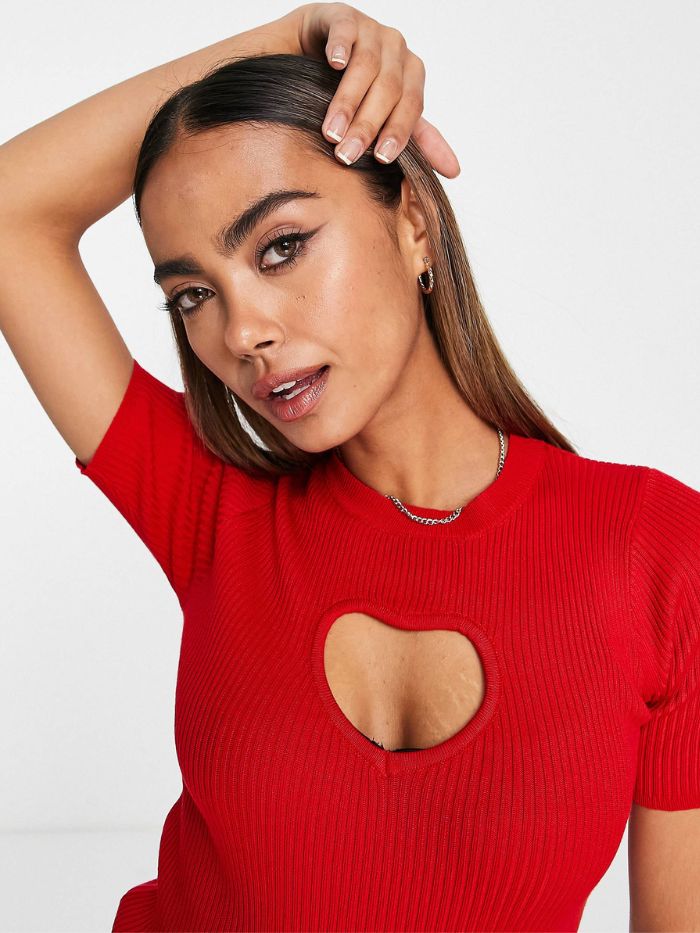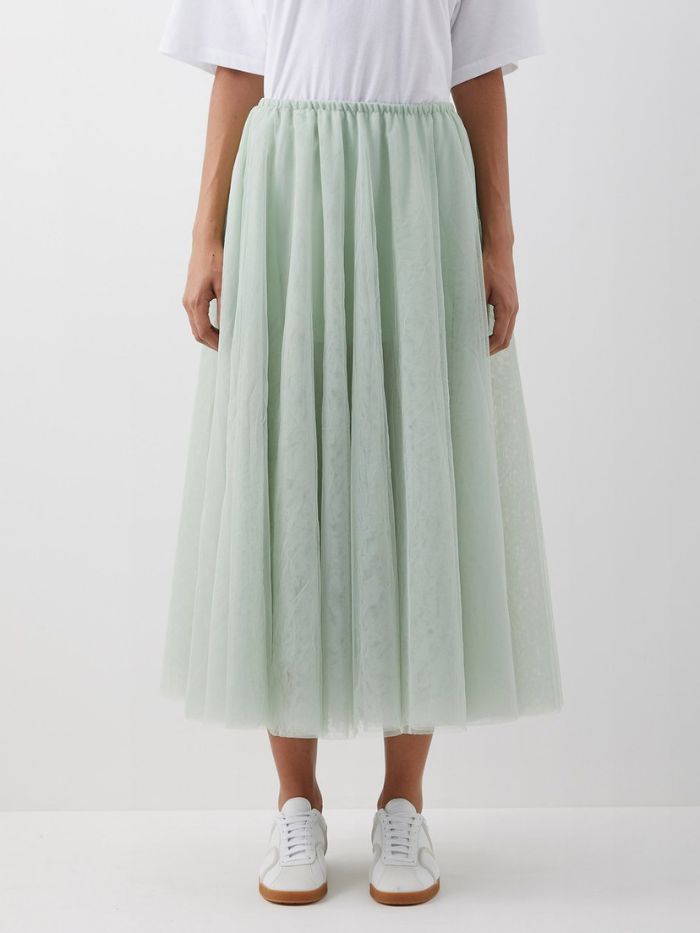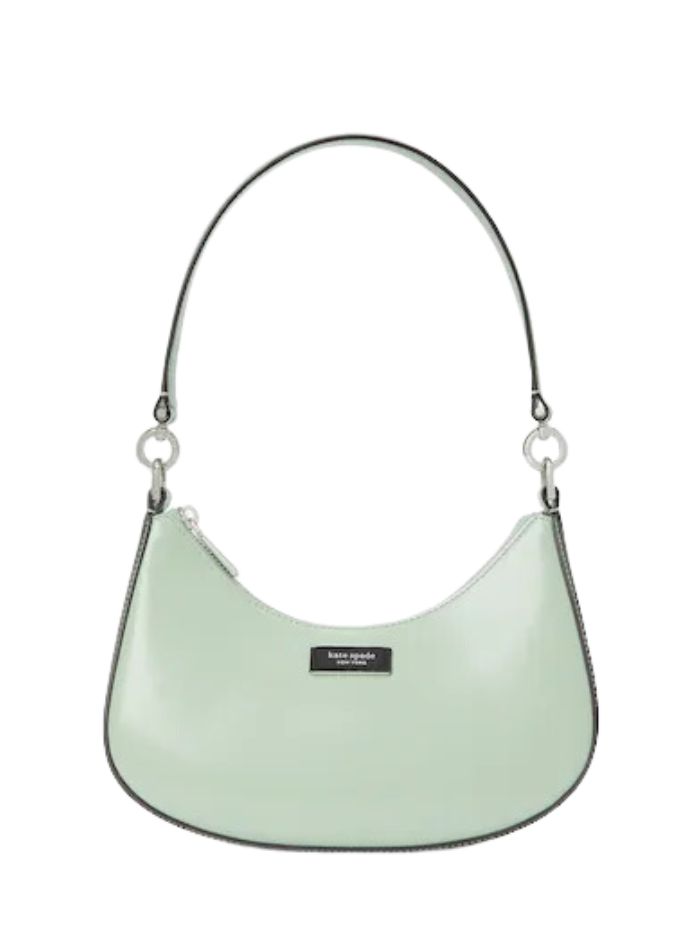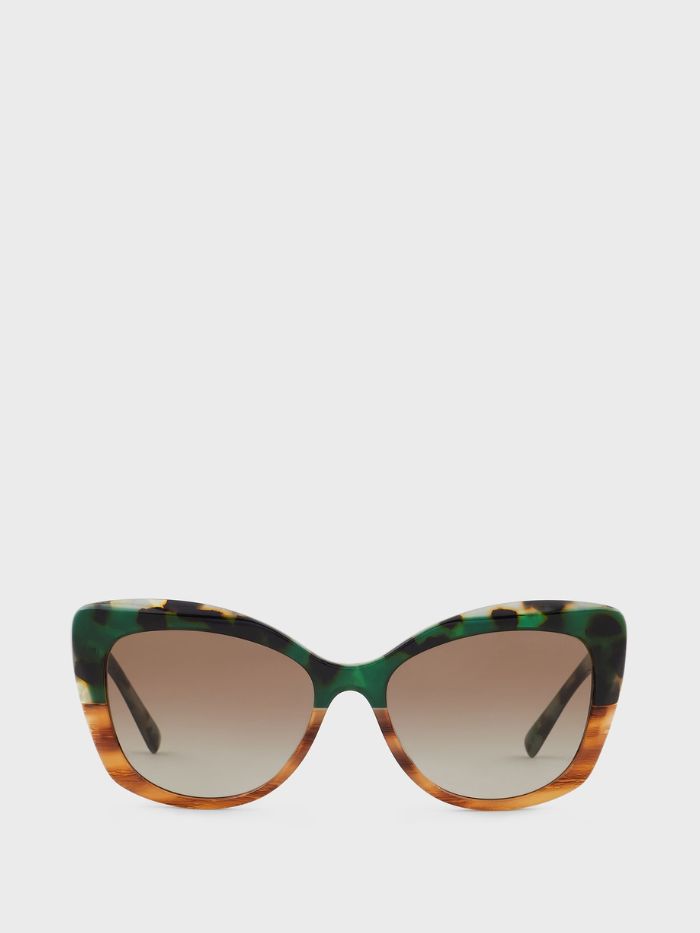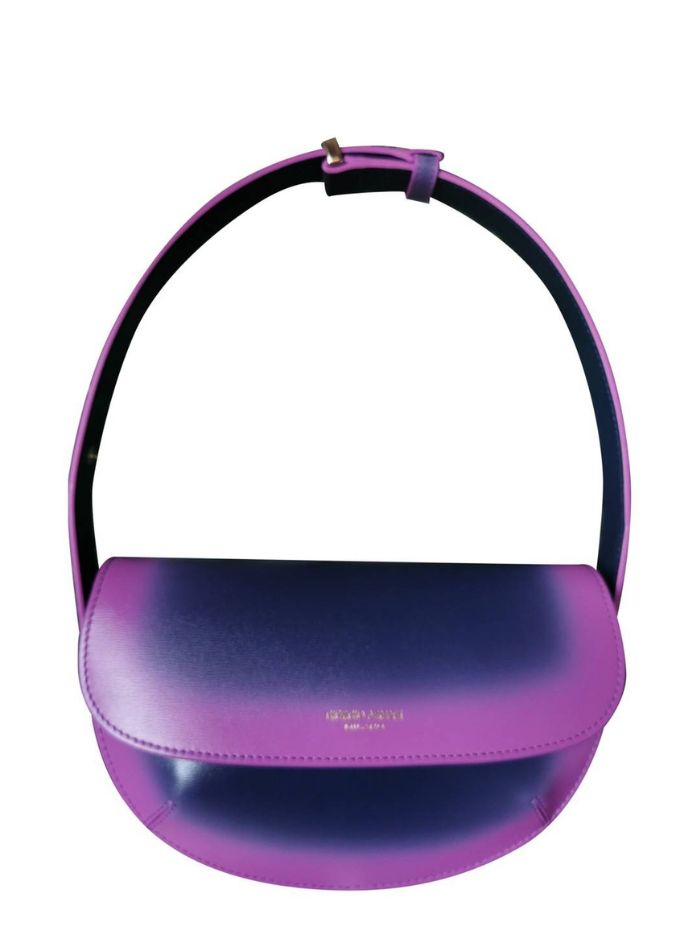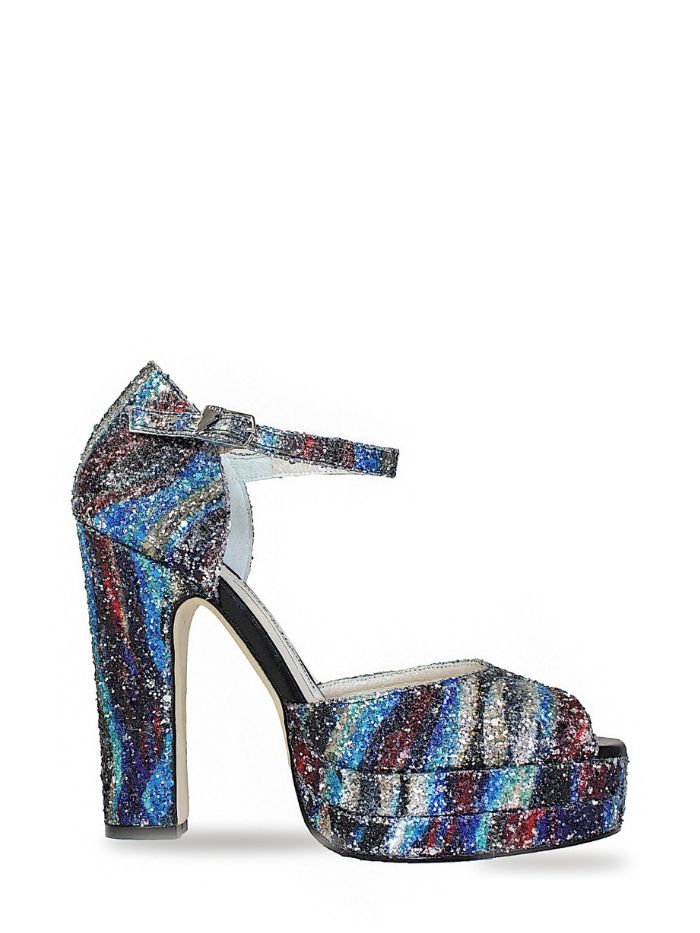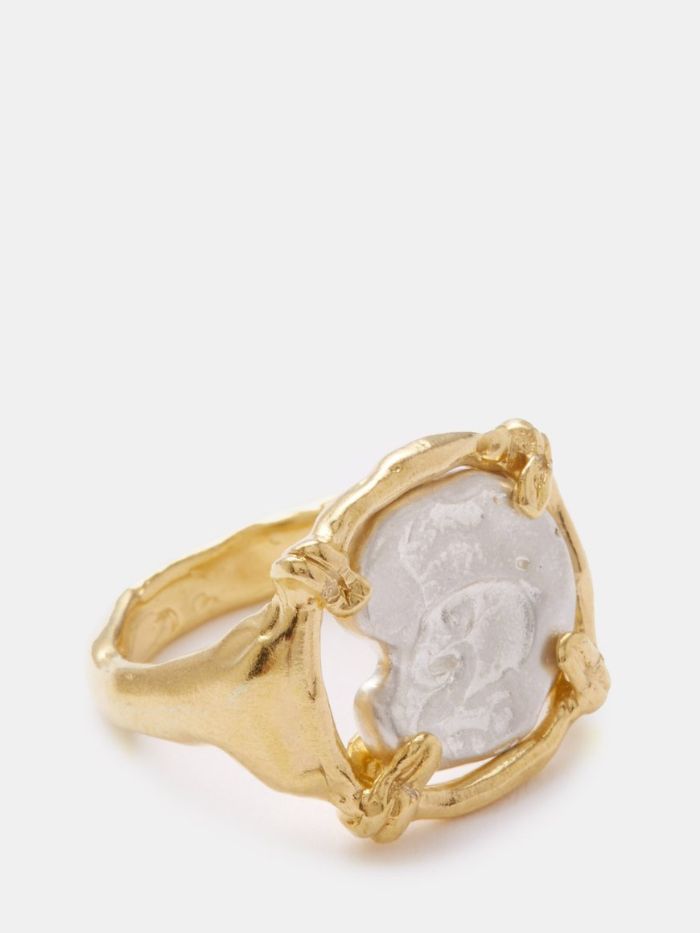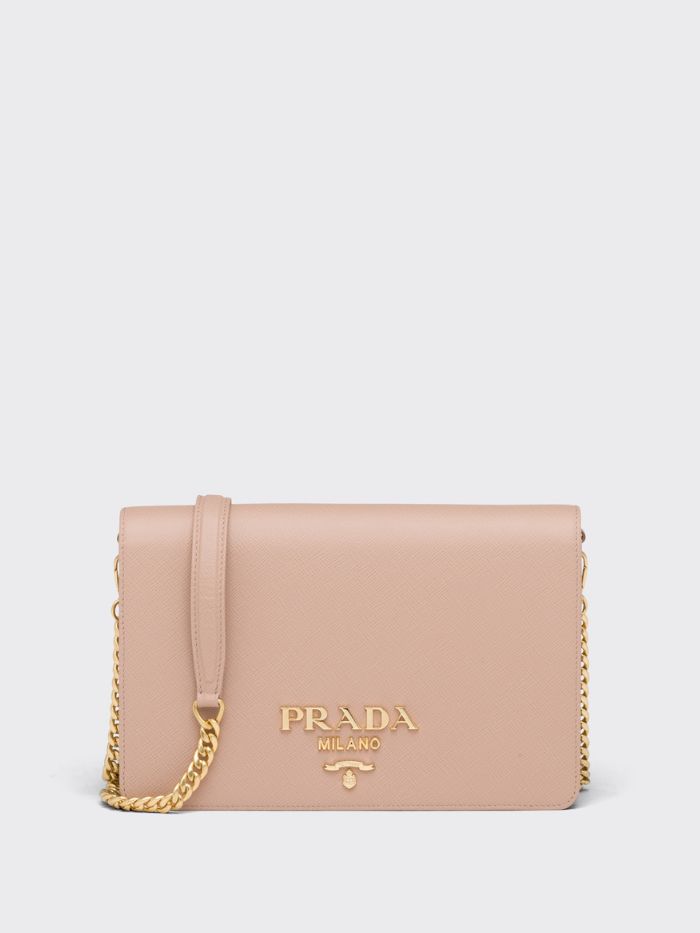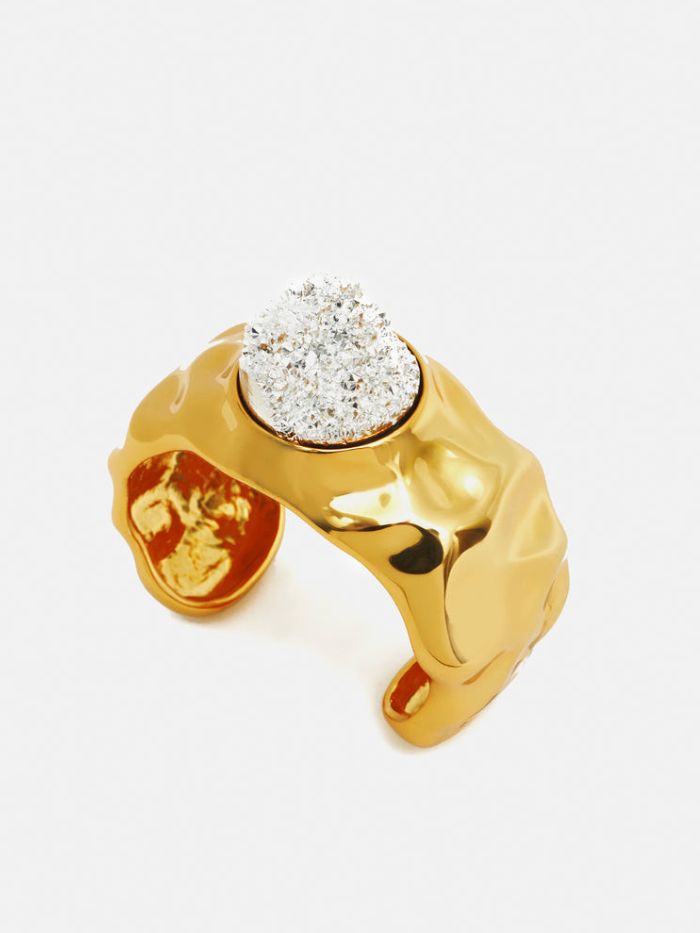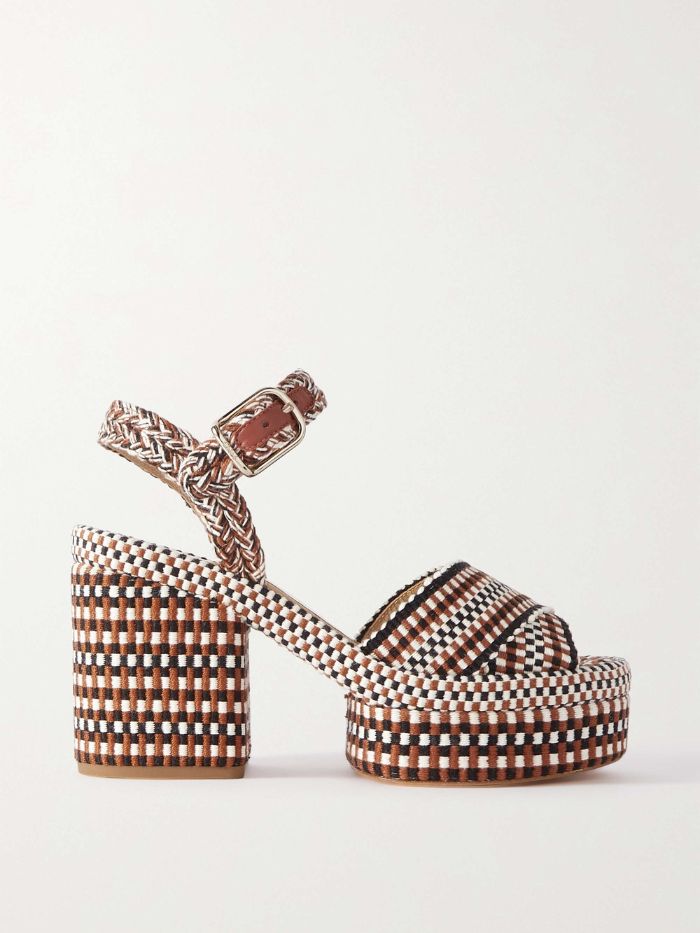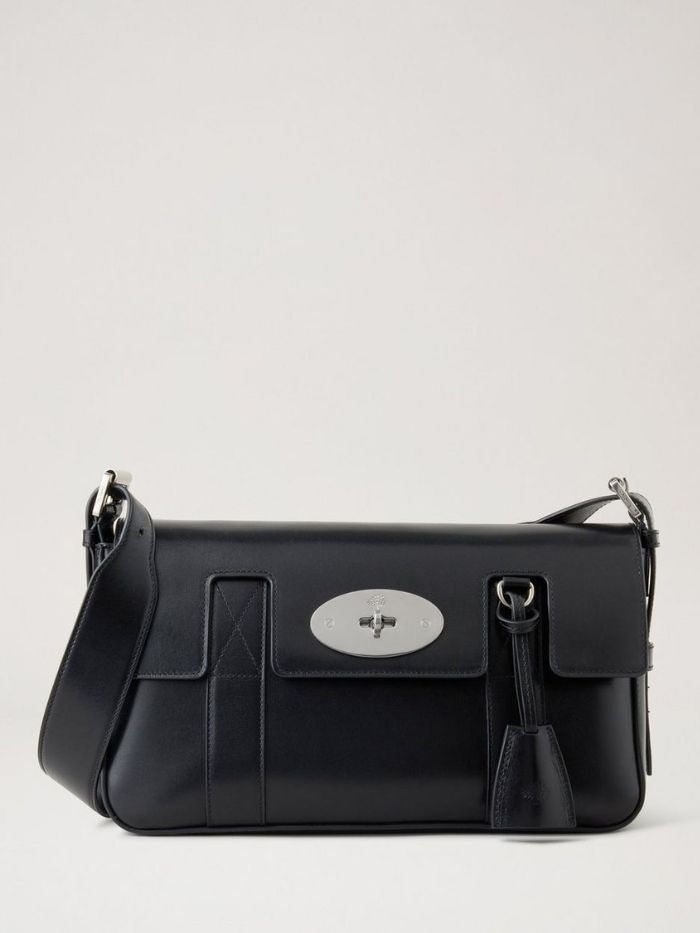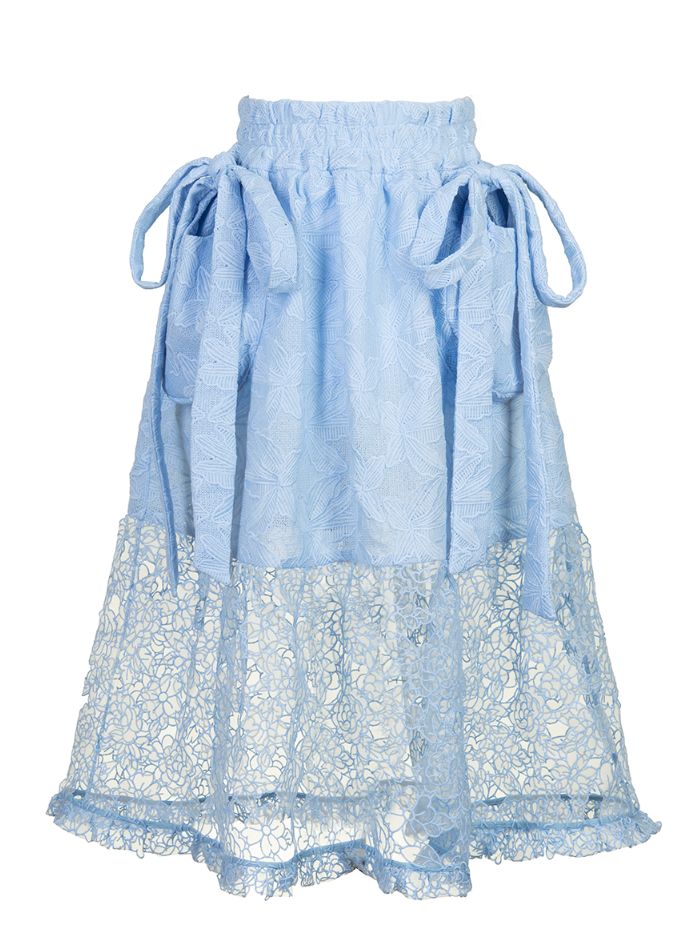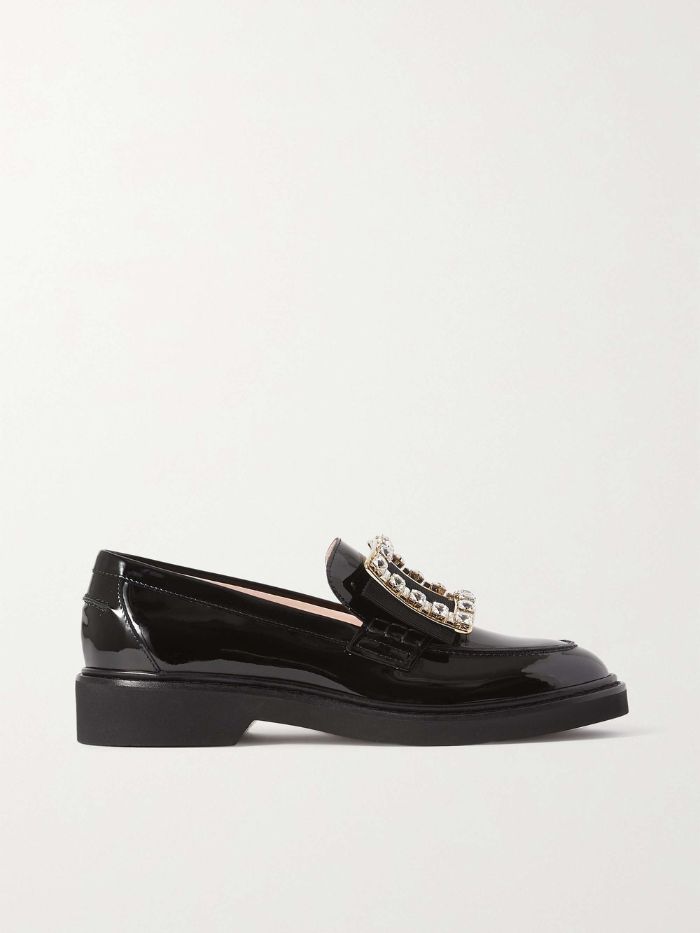My Wardrobe Is a Mix of Colour and Culture—Growing Up in London Shaped My Style

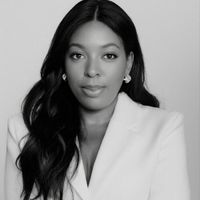

The last 12 months have been busy for author Yomi Adegoke, from presenting at the Fashion Awards to green-lighting a new TV series. We caught up with Adegoke ahead of the launch of novel The List—her first work of fiction—to find out how growing up in London and her rise to prominence has shaped her style journey thus far.
London is definitely a fashion capital, isn't it? It sounds terrible to say, but the more I travel, the more I realise just how well people in London really dress, and I love how different areas ascribe themselves to certain styles. From Sloaney Kensington to Camden punk, it's so emblematic of London as the melting pot that it is.
A lot of my style comes from the chicness of London, and the celebration of the individual. I've always approached fashion like cosplay and embodied a different personality on any given day through the right outfit, and London is one of those places where you see so many different types of people dressing in wildly different ways. That's something that I've always tried to embody.
Often, people think of British style as cool and understated, but I think the reason that I don't aim for that is my Nigerian heritage—we're a lot more bombastic with our approach to fashion. My current go-to is a green Samsøe Samsøe jumper and a lime green tutu from Anthropologie, and that kind of flamboyance and enthusiasm for colour definitely comes from like my Nigerian roots.
I have a real penchant for matching (and I know that can be divisive), but in Nigerian culture, when you dress up for wedding parties or a big birthday, we have a real culture around traditional dress. It's common to be wearing a pink skirt and a matching gele (head tie), and of course you'll have the exact same shade of pink shoes and bag, and that is such traditional styling.
I don't dress up day to day. If I'm doing errands or popping to my sister's, I have a specific, underdressed uniform of an oversized shirt, jogging bottoms and Crocs that I'll happily wear. Although, even my Crocs are a black platform pair with a fur trim, so I'm definitely into making a statement. But if I'm going to an event or a lunch—it doesn't even have to be a boujie occasion—I'll tend to err on the side of "more is more". That's partly because I don't have hair and I don't wear makeup very often, so I rely on my outfit to accessorise my look.
One of my earliest fashion memories is of my Nan. She's 90 and she looks fantastic—she's one of the chicest people ever. She's always been very, very glamorous, and I remember going to her house in Tooting where she had loads of faux fur coats and plenty of gold rings, earrings and necklaces—all beautiful, real 18- and 24-karat gold. I remember thinking, "Oh my god, I just can't wait until I'm at that age." I haven't been able to wear any of it yet because she still wears it all. After my grandad died she did the Queen Victoria thing and wore black for a year. She didn't wear jewellery either, which was such a big thing for her because she really is the most "done up" person, even to this day.

There are so many pieces in my wardrobe that are sentimental to me. I have a fishtail bridesmaid dress made of incredible kente or Dutch wax fabric (I can't remember exactly). It's a beautiful purple with a gold trim. It didn't fit me on the day (and definitely doesn't fit me now), but it was for my best friend's wedding. We didn't have time to get it taken out by the tailor, but I kept it as a memory of being her maid of honour.
My other best friend Elizabeth (who I co-wrote my first book Slay in Your Lane with) and I were interviewing [actor] Susan Wokoma, and she said that she had bought herself a nice designer bag off the back of a job, and I remember Elizabeth and I thinking how amazing that was. After Slay in Your Lane was released we bought ourselves our first ever designer bags, and I went for a really good staple: A black Saint Laurent bag with a gold chain strap and the logo in the middle. I was so, so proud of it, and I still love it several years later.
My collection has grown now, and I'm more interested in statement pieces, especially with designer bags—I now look for items that say something as opposed to blending in. I bought myself a watch off the back of The List deal coming through. It was a quality, vintage watch that was embarrassingly extravagant and absolutely ridiculous, but I love it because it's a reminder that I've come a really long way and I can now afford to buy things that are a bit more experimental without worrying about their longevity.
I did an interview about style for last year's British Fashion Awards and the interviewer said, "I feel like [we] can't guess what you're going to wear next," and I immediately felt seen because I don't even know what I'm going to wear. I can be really difficult to shop for because I don't follow a specific style. Some days I want to be in a ribbed dress and trainers with loads of gold rings and hoop earrings, whilst on other days I could be in all black for more of a graphic look. I reject the idea of things "suiting" people—everything suits everybody.
That said, I'm kind of jealous of the people who have a uniform. I have one friend who just wears all black all the time, and she always looks so fucking chic. I also have another friend who's a maximalist and loves logomania and platform shoes, and I could happily dress like either of them and still feel like I were me.
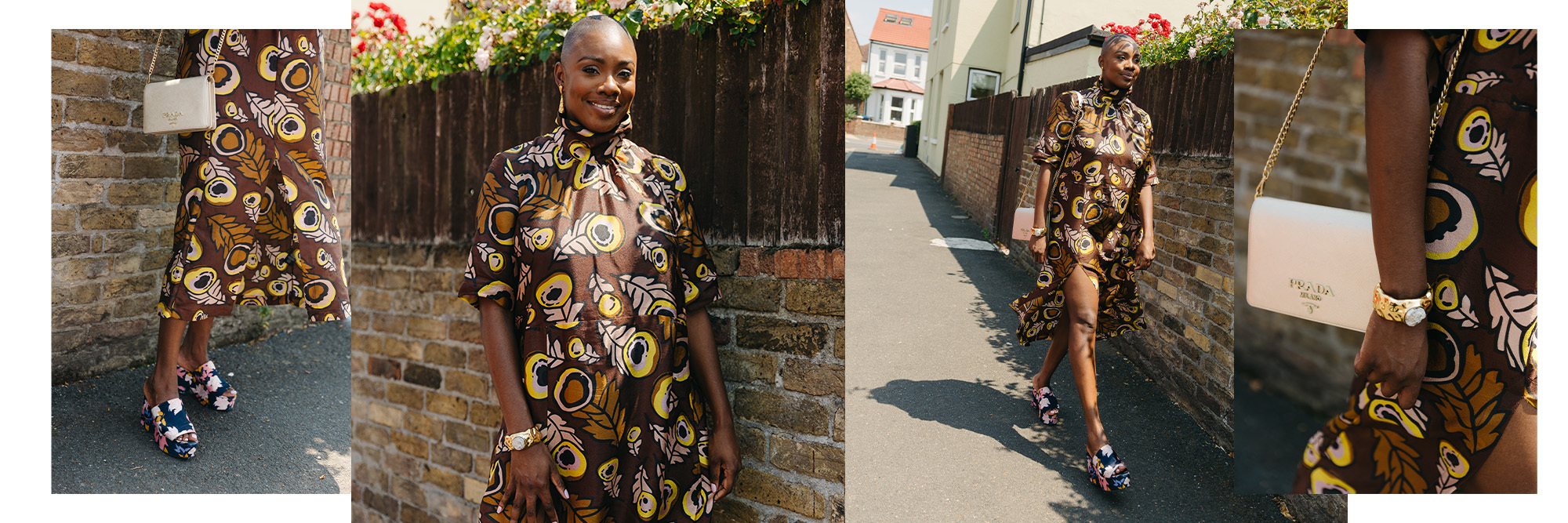
Fashion was always something I'd wanted to get into, but it can definitely feel more intimidating than general journalism. There's a stereotype of people taking themselves far too seriously and a level of elitism to it, and I just really, really like clothes. I used to paint and I did fine art A-level, and I think art and fashion very much go hand in hand in terms of creativity and self-expression. I ended up falling into fashion because I was already writing, and then commissions from fashion publications inspired my British Vogue column, and Slay in Your Lane gave us the opportunity to do photoshoots and play around with clothes. I'm really happy that I'm confident in my sense of style now, because it's mine.
I think we still have a lot of work left to do in terms of championing diversity, and there's definitely the potential to do more behind the camera, but we are seeing gains. I'm always gushing about Kenya Hunt [editor-in-chief of Elle UK] and Edward Enninful [European editorial director of Condé Nast] for the way that they have tackled diversity and inclusion so effortlessly, and never forcibly.
It's also so exciting to see what Vanessa [Kingori, chief business officer of Condé Nast] has done at British Vogue as well—there are all kinds of people who are doing brilliant and exciting things. I think that representation was initially quite surface level, but you really can't be what you can't see. It's more than putting a model in a lineup and hoping that quietens everyone down. It's only in more recent years that people have really started to understand true inclusion as opposed to ticking boxes on representation and diversity.
When Slay in Your Lane was released, we didn't know how pivotal it would be. I just really believed in it as a concept. When Elizabeth asked me to co-write it, I knew it was an idea that had never been done before. As a journalist, I could see the headlines and I knew how it will be sold and that it'd have some sort of impact, but I wasn't prepared at all for what it would lead to. I mean, she was 23 when she had the idea, and we knew nothing about anything. We just wrote about us—we were still post-grads and had just gotten jobs, she was working in the city and I was working in media. We wanted to write a book that would help us navigate this new world, and ultimately it became so much bigger than that.
It was about so many women, both younger and older, which was a real surprise. It was amazing to interview such brilliant, trailblazing Black women about their careers and lives when we were still wet behind the ears, but the amount of books that have come out since have been able to fill in gaps that we weren't able to cover. People still message me to this day, and I can't believe it's still so resonant for so many.
It's the biggest achievement of my life up to this point, and I'm so proud of it. We want, at some point, for people to read it and go, "Woah, is that what life was like for Black women in the twenty-tens?," rather than it serving as an instruction manual that would still be needed to help women navigate the hurdles that hopefully won't exist further in our lifetimes. That's the hope.
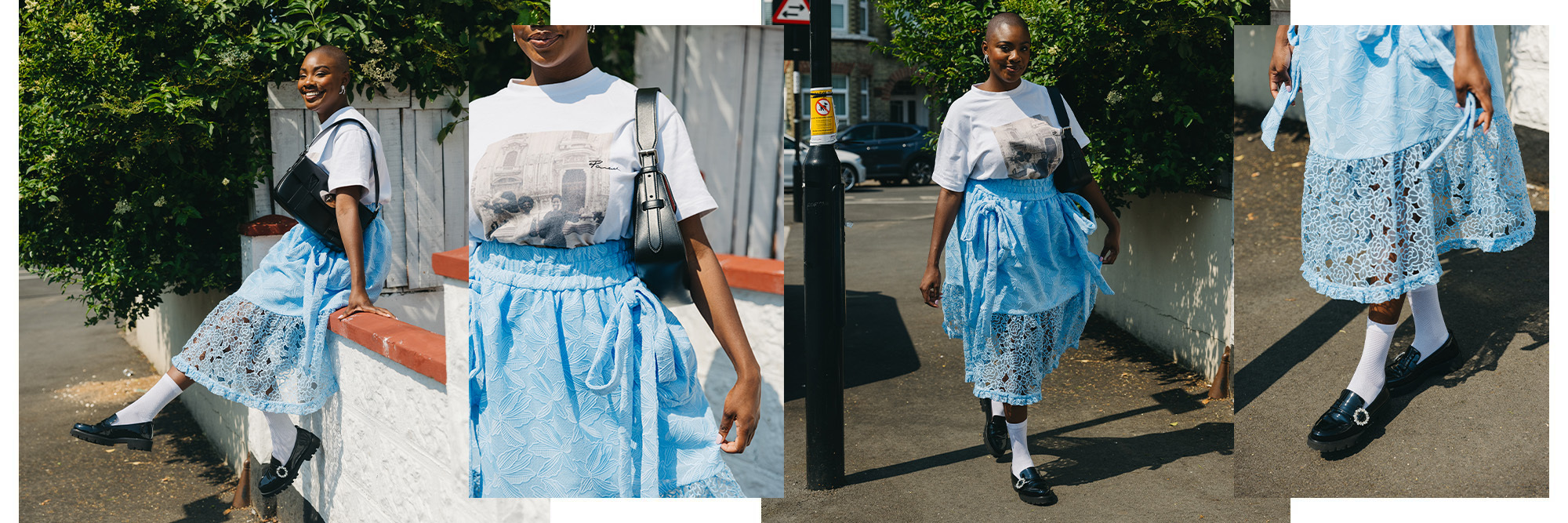
I wanted to write my debut novel The List as a non-fiction book in 2017. We were in the throes of the #MeToo movement, and anonymous lists were being circulated about abuse in various industries like music, TV and journalism, and I remember coming across one—the "Shitty Media Men" list—and it seemed to have been the catalyst that led to a movement taking place across the world. I found the concept of that really interesting.
What happens when you are trying to achieve justice and address critical, systemic abuse that's been ignored for so long? The internet has developed at a speed that the law hasn't necessarily caught up with, so we're in real time, still trying to understand the impact of such a public fallout. So, I'm always saying to people that The List is first and foremost a book about the internet. You can swap out anonymous allegations of abuse with anonymous TripAdvisor reviews—it's the idea of anonymity that I was really fascinated by.
How can we attempt to create a safer world and safer societies by using the internet as a tool? I began writing it from Ola's perspective [the book's female lead], because I felt like we don't see much from the female perspective when it comes to allegations and the women that they immediately affect. I thought, okay, what about the mothers and daughters and sisters this would affect? And it ultimately became fiction from the woman's perspective, but one perspective lends itself to the whole thing being one dimensional, so then I incorporated Michael's perspective, too. But it's so difficult to talk about without spoilers!
Part of the fun of bringing the characters to life, especially now that the book is going to be a TV show, is having the opportunity to play with their outfits. Ola's sense of style is based on a close friend of mine who basically lets her accessories do the talking. So she wears purple-rimmed reading glasses, and she has blue braids and she always has her nails done. But when it comes to actual clothing, she's a journalist and quite serious, and her sense of style is pretty pared-back. Ola's partner Michael is based on the guys that I knew growing up in my area.
I feel like a lot of straight, Black men aren't encouraged to experiment with fashion, and whilst queer Black men are leading the charge in terms of avant-garde style, there isn't much scope for men who subscribe to "laid-back London chic". He's an inner-city boy who's always got the latest trainers, and I really thought about what the characters are going to look like and how their London identities play into how they dress and express themselves. It's so much bigger than me.
Ola is a South London girl and I'm from Croydon, and I've got that weight on my shoulders to make this feel accurate and real. I want people to read the characters and see them and think, "I know that person! I know how they dress and I know where they're from," and that's been the most exciting thing to be able to bring to life.
The List (4th Estate) by Yomi Adegoke is available to buy in hardback from the 20th July.
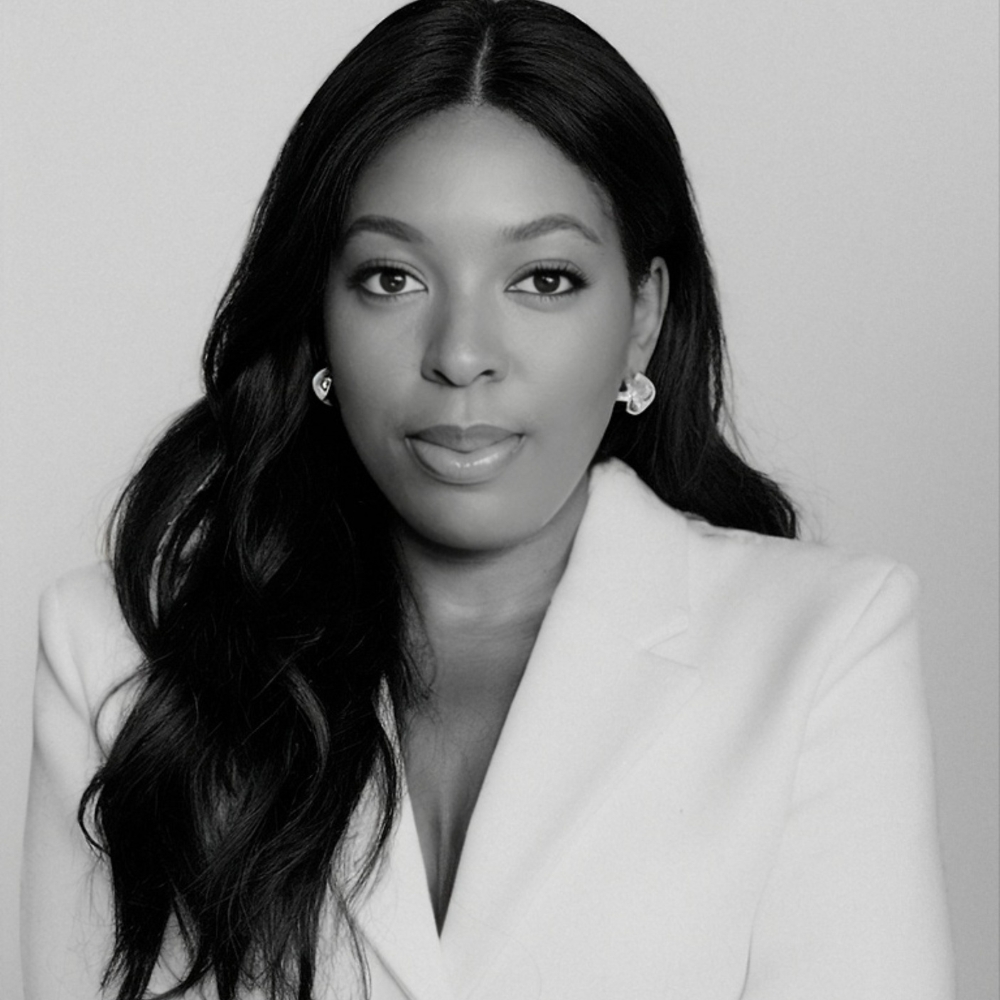
Remy Farrell is a London-based fashion editor with 10 years of experience covering fashion, beauty and lifestyle. After graduating with a journalism degree and working on the fashion teams for titles such as Grazia, Elle, and British Vogue, she moved into the luxury e-commerce sector, working as fashion assistant at TheOutnet.com After expanding an assisting and styling portfolio that includes talent such as Gigi Hadid, Victoria Beckham and Miquita Oliver, she ventured into beauty, compiling reviews and diverse beauty content.
In her role as fashion editor at Who What Wear, Remy is interested in discovering new brands to share with the WWW UK readership, and loves uncovering hidden gems to make shopping accessible to everyone.
